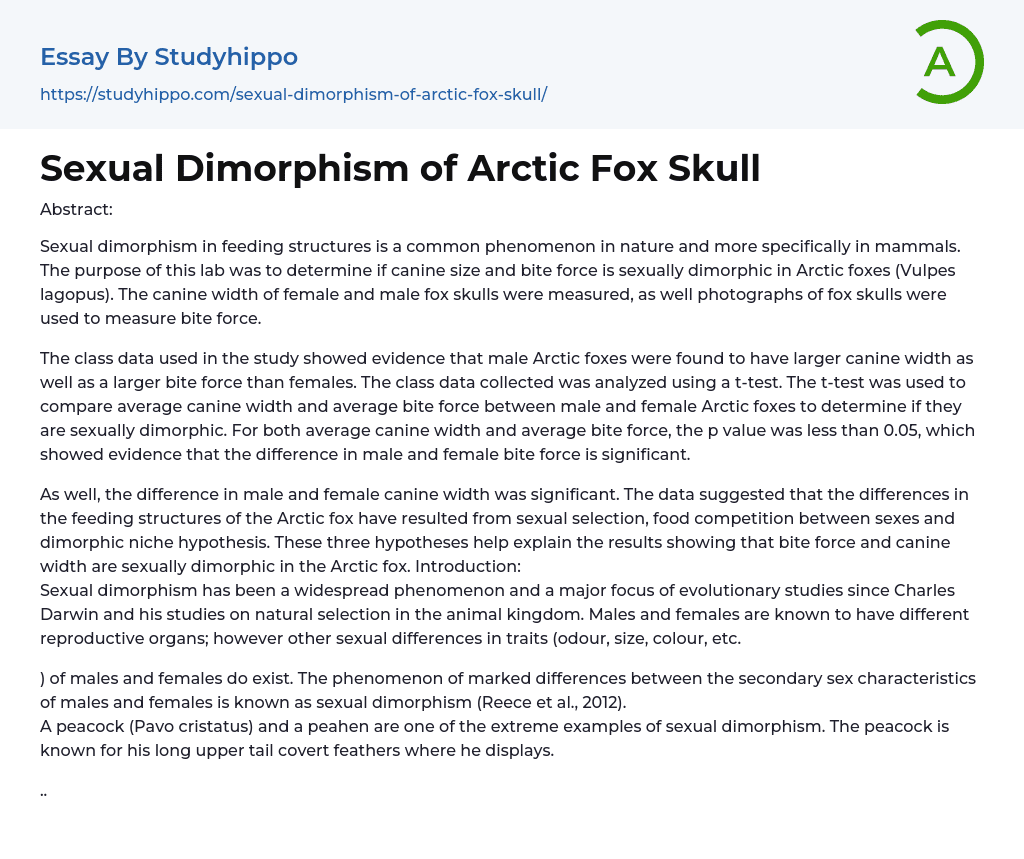Abstract:
The study aimed to examine the disparity in size and bite force of Arctic foxes (Vulpes lagopus) based on their gender. Measurements of canine width were obtained from skulls of both male and female foxes, while photographs of the skulls were used to assess bite force. The findings revealed that male Arctic foxes exhibited larger canines and a stronger bite force than females. A t-test was performed to compare average canine width and bite force between the sexes, confirming their sexual dimorphism.
The data reveals that there is a notable contrast in bite force and average canine width between male and female Arctic foxes, with p values below 0.05. This indicates that variations in feeding structures among Arctic foxes have been influenced b
...y sexual selection, food competition between sexes, and the dimorphic niche hypothesis. These results confirm the presence of sexual dimorphism in bite force and canine width for this species.
Introduction: The study of sexual dimorphism has been thoroughly explored ever since Charles Darwin conducted research on natural selection within the animal kingdom.
Sexual dimorphism is the term used to describe the variations in reproductive organs and other characteristics, such as odor, size, color, etc., that exist between males and females (Reece et al., 2012). One interesting example of sexual dimorphism can be seen in the peacock (Pavo cristatus) and peahen. The male peacock possesses long upper tail covert feathers which are used for attracting mates.
- Male essays
- Masturbation essays
- Same-Sex Marriage essays
- Bacteria essays
- Biotechnology essays
- Breeding essays
- Cell essays
- Cell Membrane essays
- Cystic Fibrosis essays
- Enzyme essays
- Human essays
- Microbiology essays
- Natural Selection essays
- Photosynthesis essays
- Plant essays
- Protein essays
- Stem Cell essays
- Viruses essays




